About the author

Magda Sukhiashvili
Magda Sukhiashvili is a leading authority on the history of Georgian ecclesiastical music. She is the author of several books, dozens of articles, and teaches at numerous institutions including the Tbilisi Conservatoire.
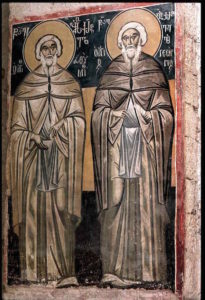
Of the musical terms attested in Medieval Georgian written sources, special attention attaches to the term mortuleba (“harmony”).[1] It is polysemantic and occurs in various branches of Georgian literature (theological and philosophical exegetics, hagiography), as well as in the study of church music. The work by Ioane Petritsi (XII c.), called Commentary on the Philosophy of Proclus Diadochus and Plato, contains particularly important evidence for the interpretation of the term mortuleba.
A version of this article was previously published here.
Opinions differ as to the essence of mortuleba and its varieties (mosartavi, rtvai, narti, tsartuli, shertuli). The term mortulebai, denoting “harmony, pattern, order,” is discussed in scholarly literature from a philosophical point of view (see Nemesius of Emesa, 1914; Ioane Petritsi, 1999). Musicologist Nino Pirtskhalava focused attention on the aesthetic aspect of the concept mortuleba (“beauty”), in addition to the philosophical one (Pirtskhalava, 1993: 94–95).
As is known from the studies of S. Gorgadze, D. Melikishvili and M. Rapava, mortuleba is an equivalent of the Greek polysemantic term harmonia (see further: Nemesius of Emesa, 1914; Ioane Petritsi, 1999; Ammonius Hermiae, 1983). This gives us reason to think that mortuleba therefore has a narrow musical-theoretical meaning like Greek “harmonia”, along with the philosophical and aesthetic content (Sukhiashvili, 2001: 51; 2002: 38–45).
In the process of identification of the special musical-theoretical meaning of the term mortuleba, the translation method must be taken into account of medieval Georgian authors such as Ioane Petritsi, the translator of works by Ammonius (if different from Petritsi),[2] Arsen Iqaltoeli (XI-XII c.), and others. As is known, this translation method implies accurate translation from the Greek language, rendering the original text with absolute accuracy.
In the word formation of Ioane Petritsi (and the translator of Ammonius if different from Petritsi), who were representatives of the Gelati literary school, the concept mortuleba must have been used with the musical-theoretical meaning corresponding to the Greek usage of the term “harmonia.”
As is known in Greek music theory, the term harmonia denoted the regularity of combination of tones in a mode, the four-tone modes,[3] and more developed mode structures resulting from the combination of tetrachords (Bershadskaia,1986: 8; and Gertsman, 1986: 156). According to ancient terminology, pitch aspects of music study are “harmonic” aspects (Gertsman, 1988).
From the second half of the 11th c. in Byzantium, the subject of ancient Greek musical culture gained interest from leading figures. Thus it is especially interesting to find out how, and with what meaning, the terms borrowed from Greek were used by Georgians who were engaged in creating translations and commentaries for philosophical literature of the ancient period (the more so as they were educated in Byzantium).
First of all, let us discuss the Commentary on the treatise Elements of Theology by Proclus, written by Ioane Petritsi.
In the second chapter of the work, which deals with the subject of the elements, the author uses an analogy from the field of music to make a point, drawing reader’s attention to mortulta guarni (“species of modes”):
“If you resort to music rtvas (tone or tetrachord combinations – M. S.), you will see among them the one, as how you combine voice and instrument tones, you will obtain the corresponding species”.
Here mortva – (Greek harmozo, harmotto) denotes harmonic joint, agreement, concord, their subordination to pitch system. The resulting species of mode (Geo: guari) is dependent as to which mode the tones are subordinated. Ioane Petritsi distinguishes guaris of modes (mortulebas) according to one or another attitude, mode (ethos). Some of them arouse compassion, some are stimulating, some are accompanying or destroying moral fortitude, etc. It is beyond any doubt that when discussing mortulebas, Ioane Petritsi implies the meaning of “harmonia” as it was used in ancient Greek music theory.
This viewpoint is also substantiated by the circumstance that in the course of discussion, the philosopher mentions ancient Greek teaching on music and discusses several musical-cosmological views in relation to the modes (mortulta guarni) and to the planets (Petritsi, 1937: 22):
“According to musical teaching, voices and mortulebas (harmonies – M. S.) of some species are regarded as belonging to the Sun, Cronus and Aphrodite.”
Another noteworthy term in Petritsi’s word formation is guari (species) which corresponds to Greek eidos (“species, type”), mentioned in Melikishvili, 1999: 217–219. In ancient Greece the developed mode forms that resulted from a combination of tetrachords were called octave “eidos” or “harmonies” (Kholopov, 1974: 305; Gertsman, 1986: 159). Cleonides names seven “eidos” of the octave which were: Mixolydian, Lydian, Phrygian, Dorian, etc. (“dia pason eide”), as cited in Gertsman, 1986: 69. In Petritsi’s word formation, mortulta guarni (“species of modes”) must refer to exactly the above-mentioned term “eidos.”[4]
Ioane Petritsi surmised on this theme of mortulta guarni that (Petritsi, 1937: 22):
“And consider combinations from hypate to nete as elements, what they in fact are, and their unions – as species…. Consider tone combinations (here intervals or tetrachord structures may be implied – M.S.) as elements, and their unions – as species, or types.”
Kakhi Rosebashvili also arrived at the conclusion that in this analogy, the concept of mode is implied. However, the identification of the musical-theoretical meaning of the term rtva was not the object of his research (Rosebashvili, 1988: 48–49).
The fact that mortulebai and mortulta guari are used in a number of specimens of Georgian literature as correlated concepts corresponding to Greek musical “harmonia” (in the sense of mode) is also visible in the Georgian translation of a work by Ammonius Hermiae (who was a Byzantine philosopher and founder of the 5th century Neo-Platonic school of Alexandria). In the commentary on the well-known work by Porphyry, Introduction to Aristotle’s Categories, these terms were used correlated concepts (Ammonius Hermiae, 1983: 098).
According to one discussion, arithmetic is a science about numbers existing in themselves, independently, whereas the object of music is the interrelation of numbers, which is reflected in the union of interdependent tones and their combinations (Ammonius Hermiae, 1883: 15). The combination of interrelated tones results in mortuleba, which we understand to mean “mode.”
* * * * *
In many Old Georgian translations, the term ketil-mortuleba also occurs. For example, the term can be found in Ephrem Mtsire’s 11th century translation of the Homily of St. John Chrysostom, in which the vision of Prophet Isaiah is explained (Isaiah 6, 1–3). Here, the God-given “ketil-mortuleba” (euphony, harmony) of the church chant modes is referenced like this (see A-162, Metaphrastic collection, 180r):
“the modes have God-given ketil-mortuleba (euphony – M. S.).”
It has become evident from the Greek text of the Homily that ketil-mortuleba corresponds to the Greek term euruthmia (see: John Chrysostom, G 1839: 97–98). The latter is a synonym of harmonia and denotes “euphony,” “beauty,” and “harmony.” In the work of St. John Chrysostom, it has a purely aesthetic, semantic function and indicates euphony and/or the harmony of church modes.

A variation on the term mortuli is another term, shertuli, which is attested in the Homily on Miracles of Martyr Theodore by Chrysippus of Jerusalem (the identity of the Georgian translator is unknown; see H-341, Hagiographic collection, 198).
Chrysippus of Jerusalem compares the sound of the strings of an instrument in his homily about miracles of St. Theodore, whereas the praise of the martyr with shertuli chant – to the understanding of these words by listeners.
It has becomes evident as a result of familiarization with the Greek original of the Miracles, that the term shertuli is the Georgian translation of the Greek sumphonia (Chrysippus of Jerusalem, Act. SS. IV, 55). The term sumphonia, like euruthmia, is a synonym of harmonia. It means “agreement, concord of sounds, and musical harmony.” Thus, in the Georgian translation of the work (circa 8th–9th cc.), the words, ‘praise of the saint’ by “shertuli sakhoiba” must be understood as, praise of the saint by “harmonious” chant.
As is obvious from the examples given above, the term under study is a semantic equivalent of the Greek musical term “harmonia,” and in some cases of its synonymous lexemes “symphony” and “eurythmy,” which points to an understanding of mode as a horizontal pitch organization.
* * * * *
The term mortuleba in medieval Georgian literature is also used with another semantic function, with the contemporary sense of “harmonia.”
In the Roman chanting schools from about the 7th c., the concept of “harmonia” gradually lost its old meaning as derived from the ancient Greeks, and became related to an entirely different phenomenon: the vertical combinations of tones. In the 7th c., however, there still co-existed two interpretations of “harmonia.” According to the ancient teaching on music, on the one hand, “harmonia” implied horizontal pitch organization, while on the other hand, it implied the simultaneous vertical combinations of voices.
The 7th c. Bishop Isidore of Seville wrote (Chevallier, 1931: 9):
“A harmonious music is voice modulation[5]; this is the agreement of several voices as well as their simultaneous combination.”
In Western Europe, beginning from the 9th c., the interpretation of the concept “harmonia” became related to its new semantics.
A number of prominent Georgian figures were educated at Byzantine educational centers before the Schism with Rome, a time when many advances, achievements, and novelties emerged in the development of Gregorian chant. Therefore, the use of the concept mortuleba by Georgian authors with a different meaning, in a time contemporary to “harmonia,” could be considered regular. Let us examine a reference in the Afterword of Ioane Petritsi’s Commentary.
In the Afterword Ioane Petritsi speaks about ‘music mortuli’ performed by the Holy Spirit (Petritsi, 1937: 217). He explains mortuleba as the simultaneous sounding of three different voices, three phthongs whose vertical combination and unification he calls sheqovleba (he names the three voices specifically as mzakhri, zhiri and bami).
Ioane Petritsi interprets the concept mortuleba in two ways: in the second chapter of the Commentary, he is guided by ancient theory, and links this term to the horizontal aspect of the pitch system; but in the independent work titled the Afterword, he appears to consider the contemporary (modified) meaning of the concept “harmonia,” and applies the same term to imply a vertical organization of pitch. Perhaps this usage was influenced by the peculiarities of the Georgian national musical practice of multi-voiced musical performance.
Therefore, in this sense, mortuleba can be read as an old Georgian term denoting “polyphony.”
The use of the term mortuli and its varieties (mortva, mosartavi, tsartuli) in medieval liturgical-hymnographic collections is also noteworthy (for example, see the manuscripts: Iadgaris – Sin, 1. Sin. 34, S 425, Heirmoses and Theotokia A-603, Pentakostarion Sin. 72, etc.).
The terms identical as to their form, attested in different sources of one and the same period, must not be different from the semantic point of view either. The definition of mortuli as a term denoting polyphony, offered by Ioane Petritsi in the Afterword, suggests that in hymnographic texts it must denote polyphonic sounding of church chants as well.
Shine, shine, new Jerusalem (Ganatldi, ganatldi, sung by the Anchiskhati Church Choir)
References
Ammonius Hermiae. The Works of Ammonius Hermiae in Georgian Literature, texts prepared for publication by N. Kechaqmadze and M. Rapava; furnished with a study, glossary and indices by M. Rapava. Tbilisi, 1983. (in Georgian)
Bershadskaia, Tamara. Lectures of Harmony (sec. supplemented ed). Leningrad: Muzika, 1986. (in Russian)
Chrysippus of Jerusalem, Act. SS, IV – Laudatio S. Theodori A. Crysippo cum Libello Miraculorum //Acta Sanctorum, Novembris, tomus IV. Bruxellis, 1925.
Chevallier, Lucien. History of Teaching on Harmony. 1931 (in Russian)
Gertsman, Evgeny. Byzantine Musicology. Leningrad: Muzika, 1968 (in Russian)
Gertsman, Evgeny. Ancient Musical Thinking. Leningrad: Muzika, 1986 (in Russian)
John Chrysostom. “Joannis Chrisostomi Interpretatio in Isaiam prophetam”, Homilia I,1, in: J. P. Migne (Ed). Patrologia Graeca, cursus compietus. tomus LVI. Paris, 1839.
Kholopov, Yuri. ”Scales of Ancient Greece”, in: Y. Keldish (Ed. in Chief), Musical Encyclopedia. Moscow: Soviet Encyclopedia, 1974: 306–307 (In Russian)
Nemesius of Emesa. For the Human Nature (ed. by S. Gorgadze). Tbilisi: Eclesiastic Museum, 1914 (In Georgian)
Petritsi, Ioane. Works. Vol. 2 (ed. by S. Nutsubidze). Tbilisi: Tbilisi State University 1937 (In Georgian)
Pertitsi, Ioane. Commentaries on Proclus Diadochus ‘Elements of Theology’. Translation into modern Georgian (introduction, dictionary and notes by D. Melikishvili). Tbilisi: Tbilisi State University Press, 1999 (In Georgian)
Pirtskhalava, Nino. “On ‘Narti’ in the Work of Ioane Petrisi’s ‘Commentary’”, in: R. Tsurtsumia (Ed. in Chief), Problems of Musicology. Collection of Research Works. Tbilisi: Tbilisi State Conservatoire, 1994, 82–102 (In Georgian)
Rosebashvili, Kakhi. “On Determination of Scale in Georgian Folk Songs//Questions of Polyphony of Georgian Music”, in: R. Tsurtsumia (Ed. in Chief), Music Collection of Research Articles. Tbilisi: Tbilisi State Conservatoire, 1988: 30–41 (In Georgian)
Sukhiashvili, Magda. “Attempts to Deny the Tradition of Georgian Church Chanting”, in: I. Chomakhashvili (Ed. in Chief), Rtsmena da Codna (Faith and Knowledge) #3(7), September – November, 2001, Tbilisi (In Georgian)
Sukhiashvili, Magda. “For Explanation of Some Old Georgian Music Terms (‘Mortuleba‘, ‘Shetsqoba’),” in: I. Chomakhashvili (Ed. in Chief), Rtsmena da Codna (Faith and Knowledge) #2, June – August, 2002, Tbilisi (In Georgian)
Manuscripts
Hagiographic Collection H-341 – Collection of the Georgian National Centre of Manuscripts (Tbilisi).
Heirmoses and Theotokia A-603 – Collection of the Georgian National Centre of Manuscripts (Tbilisi).
Iadgaris Sin.Geo.O. 34, Sin.Geo.O. 1 – Collection of the Georgian Manuscripts of St. Catherine’s Monastery Sinai.
Iadgari S425 – Collection of the Georgian National Centre of Manuscripts (Tbilisi).
Metaphrastic collection A-162 – Collection of the Georgian National Centre of Manuscripts (11th c.).
Pentakostarion Sin. 72 – Collection of the Georgian Manuscripts of St. Catherine’s Monastery of Sinai.
End Notes
[1] The present article is the English translation of a part of the author’s study For Explanation of Some Old Georgian Musical Terms, published in the Georgian language (see Sukhiashvili, 2002). [2] There is a difference of opinion in the scholarly literature about the translator of the work: According to K. Kekelidze, the work was translated by Ioane Tarichisdze. Others such as S. Gorgadze and I. Lolashvili suggest that the translation must belong to Ioane Petritsi (Ammonius Hermiae, 1983: 046). [3] According to Plato, “All harmonies (denoting “mode”– M. S.) are formed of four tones” (Gertsman, 1986: 77). [4] If guari is a variety of mode, so guarni chreltani may be interpreted as “species” or types of modes (the mode as an intonation category is implied). [5] The Latin term modulation corresponds to Greek harmonia. It denoted “mode” in the ancient as well as the medieval period.
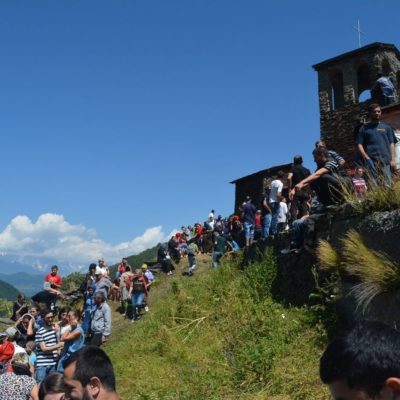
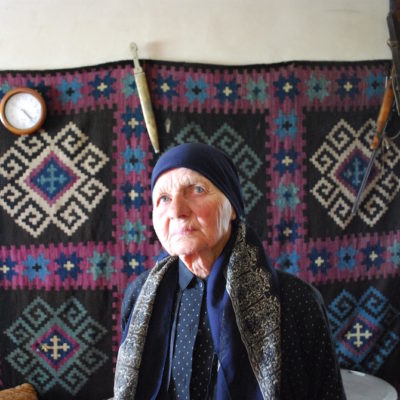
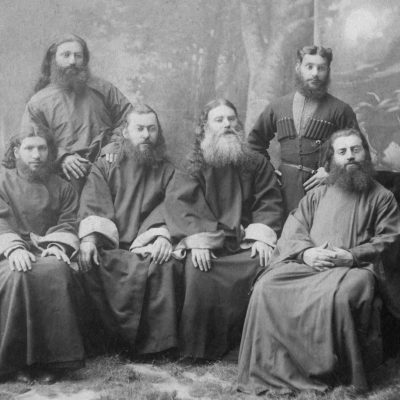
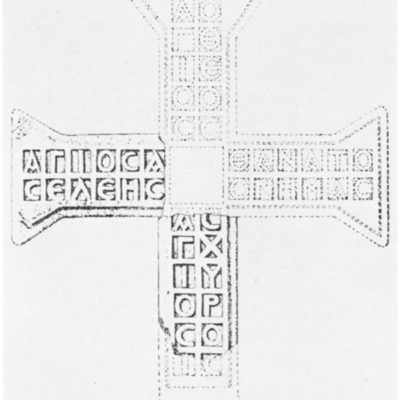

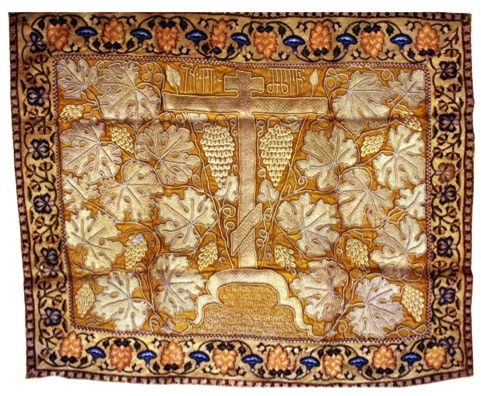
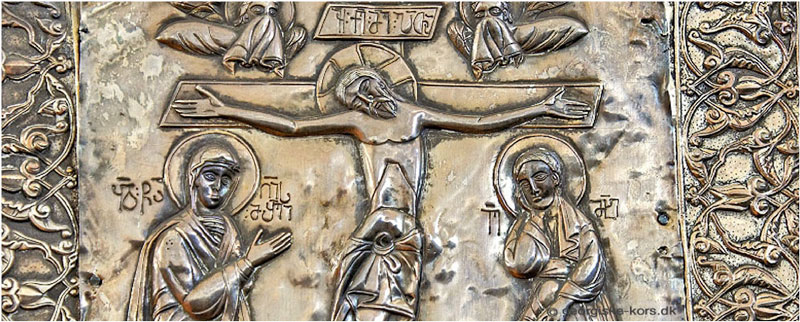
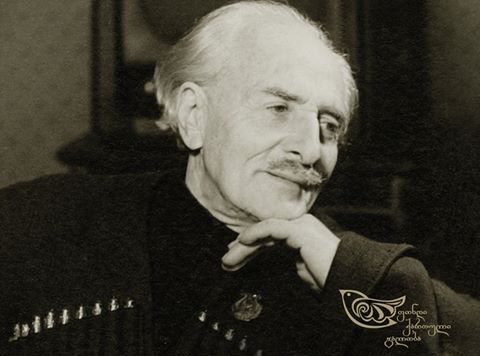
Leave a Reply